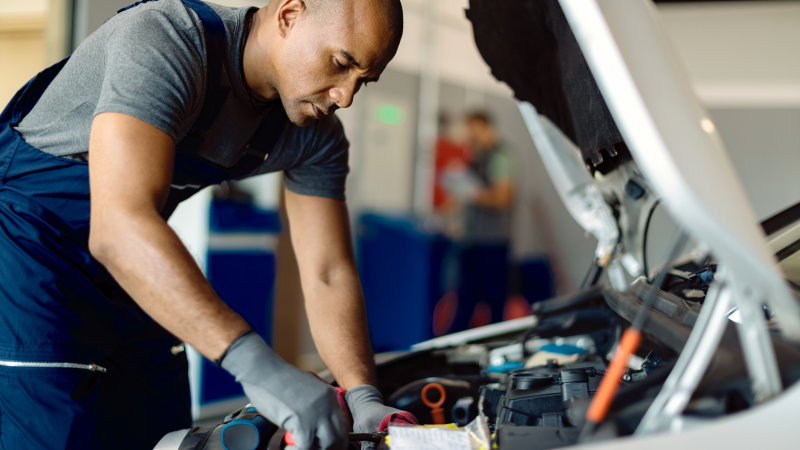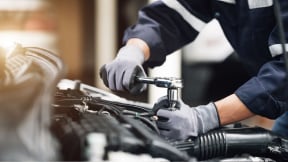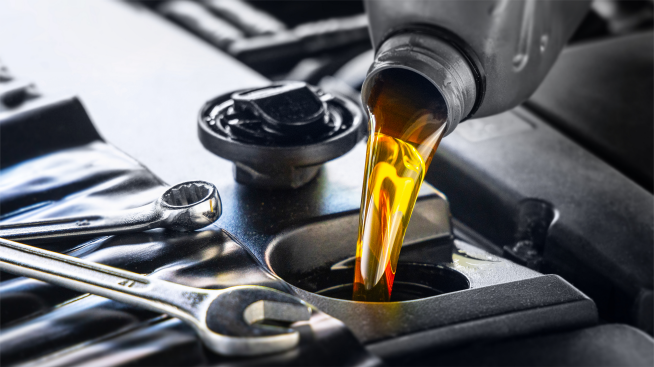Car maintenance: Debunking 7 common myths

Your car is a complex machine, a marvel of engineering in more ways than one. All those parts and systems require a steady car servicing schedule to stay in tip-top shape. Maintaining your car doesn’t have to be difficult, but because it’s a complex system, there’s a lot of misinformation out there. Whether it’s because new technology has rendered old wisdom obsolete or just plain misunderstanding, there are a lot of pervasive car servicing myths out there just begging to be debunked.
Myth #1: Modern cars require no maintenance
Today’s cars are built to try to minimize the burden of maintenance on owners as much as possible. That doesn’t mean you never have to bring it in for servicing though. Electric cars, which have simpler engines that take less maintenance, still need car servicing at regular — albeit less frequent — intervals. Even with the latest technology, your car still needs regular care and maintenance the same way you can be in peak health but still benefit from checking in with your doctor now and then.
Myth #2: Every car needs an oil change every 3,000 miles
This is one of those cases where technology has outpaced conventional wisdom. Once upon a time (and even now with older vehicles), an oil change every 3,000 miles or so was the standard. These days, car engines are designed to run cleaner than they used to. Additionally, improvements to the chemical composition of oils and the use of synthetic oils have significantly increased the interval between oil changes. Instead of relying on this now-outdated benchmark, it’s best to consult your owner’s manual to see what intervals the manufacturer recommends.
Myth #3: You should wash your car with dish soap
Dish soap is readily available, generally inexpensive, and does a great job getting grease and buildup off your dishes. So, it might make sense why someone might assume dish soap is perfectly fine to wash their car with too. Unfortunately, dish soap works a little too well on your car — it can strip off the wax coating on your car’s finish. Over time, this could lead to paint chipping and even rust marks. If you can, you may want to buy soap that’s specifically designed for cars and for helping to preserve the protective wax finish.
Myth #4: Premium, high-octane gas is better for all cars
“Premium” tends to be associated with higher quality, so it’s little surprise that there’s a myth around the use of premium gasoline. Some people think filling up with premium gasoline instead of regular is like giving their car a healthy steak salad for lunch instead of a greasy fast-food burger.
In truth, premium gasoline is designed specifically for high-performance engines. Filling up a regular car with premium gasoline yields no tangible performance benefits while still costing you more. Filling up a car that specifically calls for premium gasoline with regular gasoline, however, may affect performance in a negative way. For best results, it’s generally wise to follow your manufacturer’s recommendations.
Myth #5: Getting gas in the morning is best
A lot of things expand with heat and contract in the cold, including gasoline. That’s misled some folks into believing that filling up in the morning (when temperatures are cooler) might net them some extra fuel for free. While the theory isn’t entirely outlandish, the truth is that gasoline is typically stored insulated underground. It simply doesn’t experience enough fluctuation in temperature to have much effect on how much fuel you get.
Myth #6: Car engines need warming up in the winter
Here’s another case of technology outpacing the speed at which conventional wisdom changes. It used to be that engine parts needed a few minutes of idle time to adequately warm up in cold temperatures. These days, however, engines have been designed to warm up as they drive. That means that spending a few minutes idling may do very little other than wasting gas and money.
Myth #7: Rolling down your windows improves fuel economy vs. using the A/C
It’s technically true that using the air conditioning does burn just a little more fuel. That said, rolling down your windows can create additional drag and air resistance, which leads to burning slightly more fuel too. Ultimately, both options may have the same net effect on fuel economy — it’s up to you to do what you prefer.
In summary
This article highlighted just a few of the more popular car servicing myths out there. In nearly every case, you’ll be better off following the manufacturer’s instructions instead of word-of-mouth advice. Remember that your car needs regular health checkups the same way you do. Keeping a consistent maintenance schedule can help keep your car running at its best.



